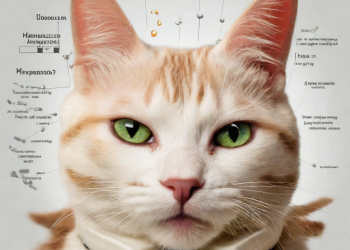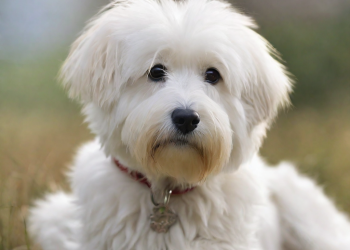The history of the cat in ancient Rome
Researching the relationship between the Romans and cats, I discovered that these felines arrived in Rome in ancient times and became an important part of society. Additionally, cats were considered sacred and had a role in Roman religion and culture. Even today, cats remain an important part of life in Spain, demonstrating the lasting influence of these animals on the history and culture of both countries.
What is Roma Gato?
Roma Gato is a city in Italy known for its rich history, art and culture. But there is much more than that to this fascinating city. Read on to discover everything Roma Gato has to offer.
Discover the magic of Roma Gato!
If you want to know more about this incredible city, you can’t miss this article. You will discover the best places to visit, the delicious food you must try and the exciting nightlife that awaits you in Roma Gato. Do not miss it!
The cat in Roman culture and art
The role of the cat in ancient Rome goes beyond its presence in the daily lives of Romans. The influence of cats on Roman culture and art can also be observed, as evidenced in the representations of cats in different forms of artistic expression.
Representations of cats in Roman painting and sculpture
In Roman painting and sculpture, cats were often depicted as symbols of elegance and grace. They were shown in majestic poses, reflecting the admiration that the Romans had for these animals.
Cats in Roman literature and theater
Cats also had a presence in Roman literature and theater, where they were mentioned in literary works and represented in theatrical scenes. Their presence in these art forms demonstrates the importance they had in the cultural life of Rome.
Cats in Roman mythology
In Roman mythology, cats also had a prominent place, being associated with deities such as the goddess of hunting, Diana. This mythological connection contributed to the positive perception of cats in Roman society.
The influence of the cat on modern Roman culture
Even in modern Roman culture, the presence of the cat remains relevant, with artistic representations and cultural references dating back to ancient Rome. The influence of cats on Roman art and culture endures to this day.
Cats in daily life in ancient Rome
Cats played a significant role in the daily life of ancient Rome, both in homes and on city streets. Their presence was common in various aspects of Roman society, from hunting to protecting homes.
Cats as pets in Roman homes
- The Romans considered cats valued pets in their homes, appreciating their company and abilities to hunt rodents.
- The presence of cats in Roman homes was common, and they were cared for and fed as part of the family.
The role of cats in hunting and protecting homes
- Cats were used to hunt rodents and protect food and valuables in Roman homes.
- Their agility and dexterity made them useful allies in the fight against pests and the preservation of hygiene in homes.
Cats in the markets and streets of Rome
- Cats were also a common presence in the markets and streets of Rome, where they helped control rodent populations.
- The Romans appreciated the presence of cats in public spaces, recognizing their contribution to cleanliness and order in the city.
The feeding and care of cats in ancient Rome
- The Romans were concerned about feeding and caring for their cats, making sure they were well fed and healthy.
- Specific practices and customs for caring for cats were developed in ancient Rome, evidencing their importance in the daily life of Roman society.
In summary, cats played a significant role in the daily life of ancient Rome, being valued as pets, hunters, and protectors in homes and public spaces. Their presence was an integral part of Roman society, evidencing the close relationship between Romans and cats in the history and culture of Rome.
The relationship between cats and Romans
The worship of cats in Roman religion
The Romans had a deep adoration for cats, considering them sacred and divine creatures. This veneration was reflected in their religion, where cats were associated with important gods and goddesses, such as the goddess of the hunt, Diana, who was represented with a cat next to her.
The relationship of cats with the Roman gods and goddesses
Cats were also closely related to other Roman gods and goddesses, such as Minerva, the goddess of wisdom, and Bastet, the Egyptian goddess of protection, whose influence spread to Rome. The Romans believed that cats had mystical powers and regarded them as messengers of the gods.
The influence of cats on the daily life of the Romans
Cats not only played a role in Roman religion, but also influenced the daily lives of Romans. They were considered protectors of homes and were bred to hunt rodents, making them valuable companions in daily life in Rome.
The importance of cats in Roman society
In short, cats were not only worshiped in Roman religion, but also played a crucial role in daily life and Roman society. His presence was so significant that his influence endures to this day in the culture and art of Rome and Spain.
The evolution of the cat in modern Rome
The presence of the cat in modern Rome has evolved significantly over the centuries, going from being a revered animal in ancient Rome to becoming a popular pet in today’s society.
A. The arrival of domestic cats in modern Rome
With the fall of the Roman Empire, domestic cats began to be introduced to Rome by merchants and travelers, becoming part of the city’s daily life.
B. The popularity of cats in today’s society
Today, cats are one of the most popular pets in Rome, appreciated for their companionship and independent nature.
C. Cats in popular culture and the media in Spain
Cats have gained popularity in popular culture and media in Rome, appearing in movies, television shows, and social media as symbols of elegance and mystery.
D. The relationship between cats and Spaniards today
Cats remain an important part of daily life for Romans, being prized for their role as loving pets and loyal companions.
In summary, the evolution of the cat in modern Rome has led to greater appreciation and popularity of these felines in today’s society, where they continue to play a significant role in the daily lives of Romans.
Cats in Spanish literature and art
Cats have been a constant presence in Spanish literature and art throughout history, influencing both writers and artists in their creative work. The representation of cats in Spanish culture has been varied and significant, showing the importance of these animals in society.
The representation of cats in Spanish literature
- Cats have been a recurring theme in Spanish poetry and prose, being symbols of mystery, cunning and elegance.
- Authors such as Federico García Lorca, Miguel de Cervantes and Gustavo Adolfo Bécquer have included references to cats in their works, highlighting their presence in culture and daily life.
Cats in Spanish painting and sculpture
- Cats have been represented in Spanish painting and sculpture from medieval times to the present day, showing the diversity of artistic styles and approaches.
- Artists such as Francisco de Goya, Diego Velázquez and Pablo Picasso have included the figure of the cat in their works, giving them a symbolic and aesthetic meaning.
The influence of the cat on Spanish culture and art
- Cats have been a source of inspiration for Spanish writers, artists and thinkers, influencing the creation of literary, pictorial and sculptural works.
- The presence of the cat in Spanish culture has contributed to the construction of a unique artistic and literary identity, reflecting the special relationship that the Spanish have maintained with these animals over time.
Famous cats in the history of Spain
- In the history of Spain, famous cats have stood out and have been immortalized in literature, art and popular culture, showing the relevance of these animals in Spanish society.
- The presence of cats in the history of Spain has left a lasting mark on culture and art, demonstrating their importance in the daily life and creativity of the Spanish people.
The importance of the cat in modern life in Spain
Cats as pets in Spanish homes
Cats have been part of everyday life in Spain since the time of ancient Rome. Currently, many Spanish homes have cats as pets, enjoying their company and affection.
The relationship between cats and Spaniards today
The presence of cats in modern life in Spain is undeniable, as they have been part of culture and society since ancient times. The Spanish have developed a special relationship with cats, considering them as members of the family and providing them with care and protection.
The influence of cats on Spanish culture and society
Cats have left their mark on Spanish culture, appearing in literary works, paintings, sculptures and other aspects of daily life. Their presence has influenced the way in which Spaniards perceive these animals and how they integrate them into their daily lives.
The protection and care of cats in Spain
Currently, there are numerous organizations and programs dedicated to the protection and care of cats in Spain. This reflects the importance that Spaniards attach to the preservation of the well-being of these animals, recognizing their value in today’s society.
Cats in medicine and science in Spain
Cats have played a significant role in medicine and science in Spain throughout history, influencing the health and well-being of Spaniards in various ways.
A. The use of cats in traditional Spanish medicine
- In ancient Rome, the cat was considered a sacred animal and was believed to have healing properties.
- The Romans used cats in traditional medicine to treat various ailments and diseases.
- The presence of cats in Roman homes was associated with protection against disease and promotion of health.
B. Scientific research on cats in Spain
- Currently, scientific research on cats in Spain has revealed benefits for human health.
- Studies have shown that the presence of cats in homes can reduce stress and anxiety in people.
- Cats have also been the subject of research in fields such as psychology, neuroscience, and veterinary medicine.
C. The importance of cats in the health and well-being of Spaniards
- Cats have been shown to have a positive impact on the mental and emotional health of Spaniards.
- The company of cats can provide comfort, relieve stress and improve people’s mood.
- Interaction with cats has also been associated with lowering blood pressure and preventing heart disease.
D. The relationship between cats and mental health in Spain
- In Roman culture, cats were seen as protectors of health and were believed to have the ability to ward off evil spirits.
- Currently, cats continue to be valued for their positive influence on the mental health of Spaniards.
- The presence of cats in homes and therapeutic settings has been shown to be beneficial for people suffering from anxiety, depression and other mental disorders.
Cats in the conservation of historical heritage in Spain
Cats have played an important role in the preservation of historical heritage in Spain, just as they did in ancient Rome. Their presence in monuments and historical sites has contributed to protecting these places in various ways.
The presence of cats in the monuments and historical sites of Spain
Throughout Spain, cats can be found around monuments and historical sites, such as in ancient Rome. Their presence has become part of the cultural landscape and has been welcomed by many.
The importance of cats in the conservation of Spanish historical heritage
Cats have helped control populations of rodents and other animals that could cause damage to monuments and historical sites. Their presence has contributed to keeping these places in good condition over time.
The relationship between cats and tourism in Spain
The presence of cats in historical sites in Spain has also attracted tourists, just as they did in ancient Rome. Many visitors enjoy seeing these cats while exploring historical sites.
The protection of cats in the historical sites of Spain
In addition to contributing to the conservation of historical heritage, measures have been implemented to protect the cats that live in these places. Organizations and volunteers work to ensure their well-being and preserve their presence in these historic environments.
Conclusions
After exploring the history of the cat in ancient Rome and its evolution in Spanish culture and society, we can reach several important conclusions about the relationship between cats and the Romans and Spaniards.
Importance of the cat in the history and culture of Rome and Spain
- The cat has played a significant role in society in both ancient Rome and modern Spain.
- From its arrival in Rome to its presence in the daily lives of Spaniards, the cat has left a lasting mark on the history and culture of both places.
Evolution of the relationship between cats and the Romans and Spaniards
- Over the centuries, the relationship between cats and Romans has gone from adoration in ancient Rome to popularity as pets in modern Spain.
- Cats have gone from being seen as divine beings in Roman mythology to being considered beloved companions in Spanish homes.
Influence of cats on society and daily life in Spain
- Cats have had a significant impact on Spanish culture, art and literature, demonstrating their importance in Spanish society.
- Furthermore, cats have come to be considered members of the family in many Spanish homes, showing their influence on the daily lives of Spaniards.
Future perspectives on the relationship between cats and Spaniards
- As Spanish society continues to evolve, it is likely that the relationship between cats and Spaniards will also undergo changes.
- It is important to continue protecting and caring for cats in Spain, recognizing their importance in history, culture and modern life.











